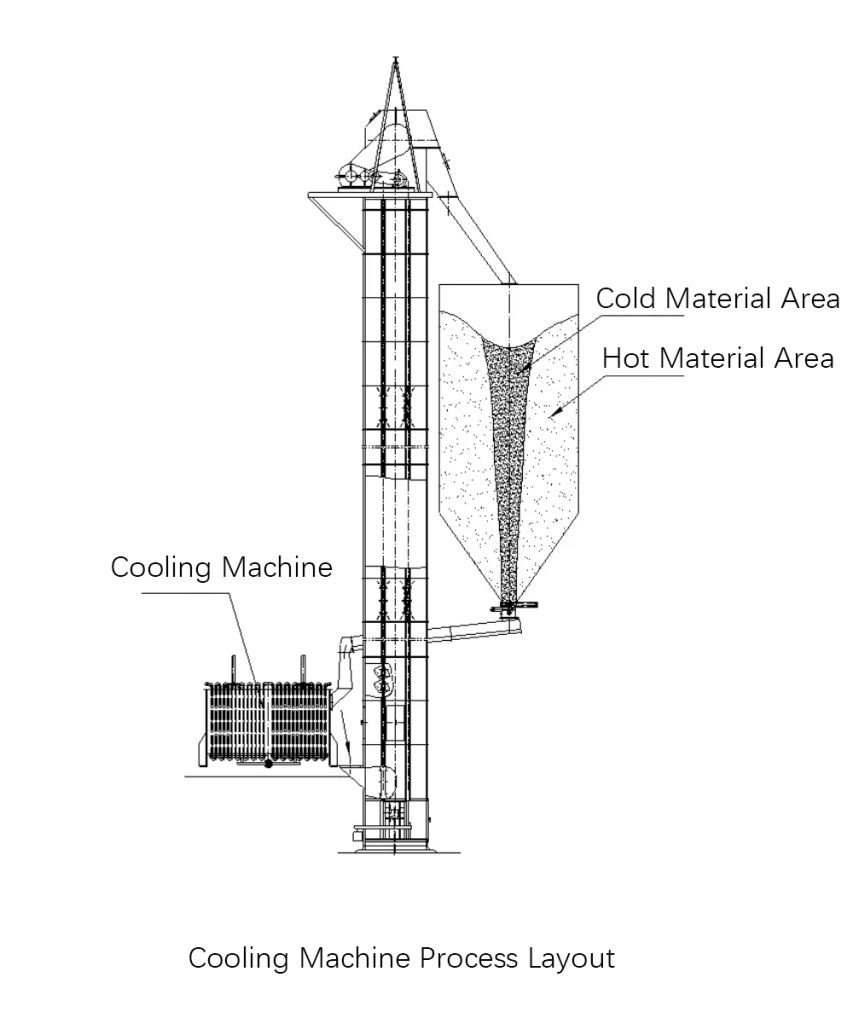En cemento producción, el proceso de enfriamiento es fundamental para garantizar la calidad y el rendimiento del producto. Se utilizan dos métodos principales: refrigeración en línea y refrigeración posterior al almacenamiento. La refrigeración posterior al almacenamiento, con su amplio rango de refrigeración y control preciso de la temperatura, es ideal para aplicaciones que requieren una gestión térmica estricta. Para maximizar la eficiencia y la longevidad de los equipos, hay que tener en cuenta varios factores clave durante su aplicación.

1. Superar las ineficiencias de la refrigeración local
En un proceso de enfriamiento de un solo silo, el cemento sale del silo, pasa por el enfriador y regresa a través de un elevador. Sin embargo, esto puede dar lugar a un enfriamiento desigual: mientras que la temperatura de descarga del enfriador cumple las normas, el material de salida del silo puede permanecer demasiado caliente. Esto ocurre debido a canalización del flujo de material, donde sólo circula una parte del cemento, dejando el resto insuficientemente refrigerado.
Solución:
Adopte una proceso de enfriamiento dual-silo. El cemento del silo A pasa a través del enfriador al silo B. Si las temperaturas siguen siendo altas, el material puede volver al silo A para seguir enfriándose. Este método garantiza distribución uniforme de la temperatura y el cumplimiento de las normas de calidad.
2. Prevención del apelmazamiento del cemento en los silos
Las fluctuaciones de temperatura durante el almacenamiento suelen provocar que el cemento torta en las paredes del silo, sobre todo en los silos de acero. Al descender el nivel de cemento, los trozos pueden desprenderse y entrar en el enfriador, con el riesgo de bloqueos mecánicos o daños en el equipo.
Solución:
Instale dispositivos de desescoriado del preenfriador para romper los grumos antes de que lleguen al refrigerador.
Añada puertos de inspección para el mantenimiento regular y la eliminación del material apelmazado.
3. Evitar problemas con la caja de expansión
Cuando el cemento llena en exceso la carcasa del refrigerador, la acción mecánica puede causar expansión del material, provocando deformaciones en la carcasa, bloqueos o fallos en las piezas. Esto suele ocurrir cuando las tasas de descarga del silo superan la capacidad del enfriador o del elevador.
Solución:
Utilice alimentadores estabilizadores de caudal bajo el silo para regular el caudal de descarga y evitar la sobrecarga del sistema.
Conclusiones: Optimizar el enfriamiento del cemento para obtener calidad y eficiencia
Un diseño y un mantenimiento adecuados del proceso de refrigeración son esenciales para producción de cemento de alta calidad. Al dirigirse a desequilibrios locales de refrigeración, apelmazamiento y riesgos de expansión, los fabricantes pueden mejorar la eficacia y prolongar la vida útil de los equipos.
¿Necesita asesoramiento experto sobre soluciones de refrigeración del cemento?
Contacte con nosotros ¡hoy mismo para obtener apoyo a medida y experiencia líder en la industria!

